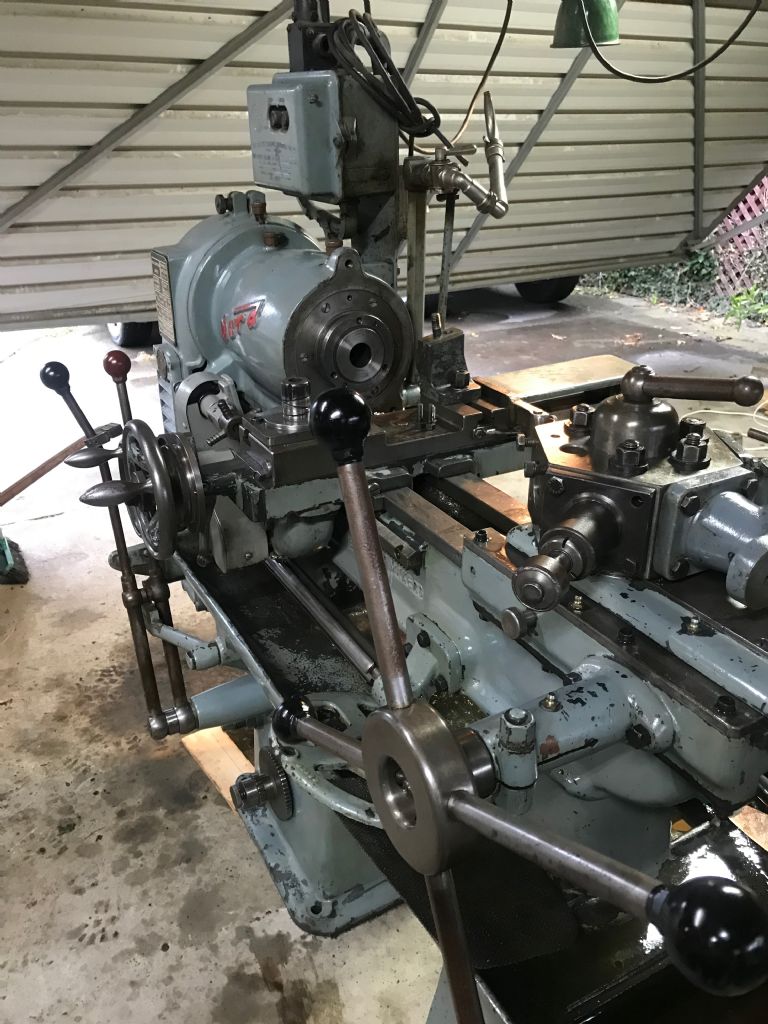It's a capstan lathe, ideal for certain types of repetition work, where up to six different cutting operations are performed in sequence by rotating the capstan. They're really for churning out multiple copies of the same part in a jiffy, but can be used conventionally too.
Things to watch out for: these are production machines, likely to have been worked hard. Bed wear is to be expected, because most saddle movement occurs near the chuck, where it develops a trench that eventually upsets accuracy. The saddle grinds out a sloping cavity in the bed, and sinking into it alters the cutter height.
There's a suggestion of bed wear in the photo, might just be grubby:

How much bed wear matters depends on what the lathe is used for. In a production setting, the lathe would be taken out of service as soon as it failed to meet tolerances (which could be slack or tight). Depending on the economics, the bed might have been reground (only possible a few times), the machine moved to less demanding work, or scrapped.
In their day capstan lathes were usually worked to death, but CNC changed the rules of the game. CNC meant that many manual lathes and mills were either sold in good nick, or became second-fiddle for short simple production runs were setting up CNC wasn't worth the effort. So used much less heavily than in the past. As time passed, setting up CNC got slicker and quicker, making it ever less likely that a capstan lathe would be thrashed. Eventually the shop might decide they needed the space more than the machine, and a capstan lathe in good order would become available for far less than it cost new. The condition of a second-hand machine depends on its history.
The amount of wear can be gauged with a straight edge, but I think using the lathe to cut metal is a better test. A manual operator can often adapt to the shortcomings of a badly worn machine and still do good work. Slight or moderate wear may not matter at all because home-workshops rarely work to tolerances.
Dave
Jelly.


















